Baiyang Liu
Reimagining Wireless Connectivity: The FAS-RIS Synergy for 6G Smart Cities
Dec 22, 2025Abstract:Fluid antenna system (FAS) represents the concept of treating antenna as a reconfigurable physical-layer resource to broaden system design and network optimization and inspire next-generation reconfigurable antennas. FAS can unleash new degree of freedom (DoF) via antenna reconfigurations for novel spatial diversity. Reconfigurable intelligent surfaces (RISs) on the other hand can reshape wireless propagation environments but often face limitations from double path-loss and minimal signal processing capability when operating independently. This article envisions a transformative FAS-RIS integrated architecture for future smart city networks, uniting the adaptability of FAS with the environmental control of RIS. The proposed framework has five key applications: FAS-enabled base stations (BSs) for large-scale beamforming, FAS-equipped user devices with finest spatial diversity, and three novel RIS paradigms -- fluid RIS (FRIS) with reconfigurable elements, FAS-embedded RIS as active relays, and enormous FAS (E-FAS) exploiting surface waves on facades to re-establish line-of-sight (LoS) communication. A two-timescale control mechanism coordinates network-level beamforming with rapid, device-level adaptation. Applications spanning from simultaneous wireless information and power transfer (SWIPT) to integrated sensing and communications (ISAC), with challenges in co-design, channel modeling, and optimization, are discussed. This article concludes with simulation results demonstrating the robustness and effectiveness of the FAS-RIS system.
An Fluid Antenna Array-Enabled DOA Estimation Method: End-Fire Effect Suppression
Dec 22, 2025Abstract:Direction of Arrival (DOA) estimation serves as a critical sensing technology poised to play a vital role in future intelligent and ubiquitous communication systems. Despite the development of numerous mature super-resolution algorithms, the inherent end-fire effect problem in fixed antenna arrays remains inadequately addressed. This work proposed a novel array architecture composed of fluid antennas. By exploiting the spatial reconfigurability of their positions to equivalently modulate the array steering vector and integrating it with the classical MUSIC algorithm, this approach achieved high-precision DOA estimation. Simulation results demonstrated that the proposed method delivers outstanding estimation performance even in highly challenging end-fire regions.
FAS-ARIS: Turning Multipath Challenges Into Localization Opportunities
Sep 15, 2025



Abstract:Traditional single-input single-output (SISO) systems face fundamental limitations in achieving accurate three-dimensional (3D) localization due to limited spatial degrees of freedom (DoF) and the adverse impact of multipath propagation. This paper proposes a novel fluid antenna system (FAS)-active reconfigurable intelligent surface (ARIS) framework that transforms multipath effects from a hindrance into a resource for enhanced localization. By synergistically combining the signal amplification capabilities of ARIS with the spatial diversity enabled by FAS, the proposed system achieves robust 3D user equipment (UE) positioning -- without relying on auxiliary information such as time-of-arrival (ToA) or frequency diversity. The system exploits both line-of-sight (LoS) and non-line-of-sight (NLoS) components through a tailored signal decoupling strategy. We design novel UE pilot sequences and ARIS phase configurations to effectively separate LoS and NLoS channels, enabling independent parameter estimation. A multi-stage estimation algorithm is then applied: the multiple signal classification (MUSIC) algorithm estimates angle-of-arrival (AoA) from the direct path, while maximum likelihood estimation with interior-point refinement recovers cascaded channel parameters from the reflected path. Finally, geometric triangulation using least-squares estimation determines the UE's 3D position based on the extracted AoA information. Comprehensive performance analysis, including the derivation of Cram\'{e}r-Rao bounds for both channel and position estimation, establishes theoretical benchmarks. Simulation results confirm that the proposed FAS-ARIS framework achieves near-optimal localization accuracy while maintaining robustness in rich multipath environments -- effectively turning conventional localization challenges into advantages.
A Contemporary Survey on Fluid Antenna Systems: Fundamentals and Networking Perspectives
Jun 16, 2025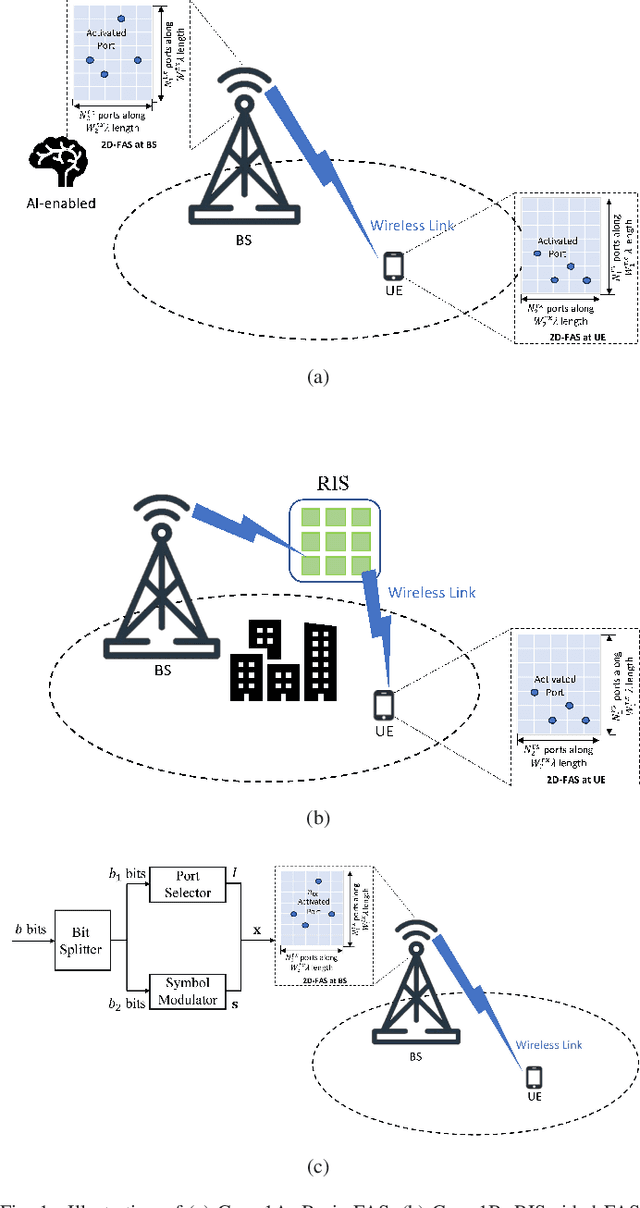
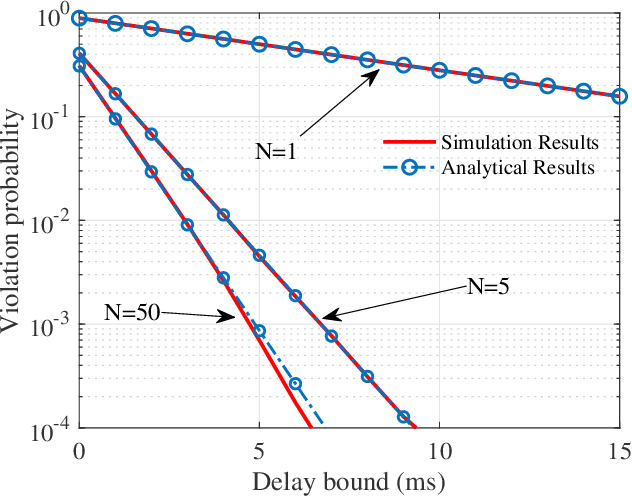
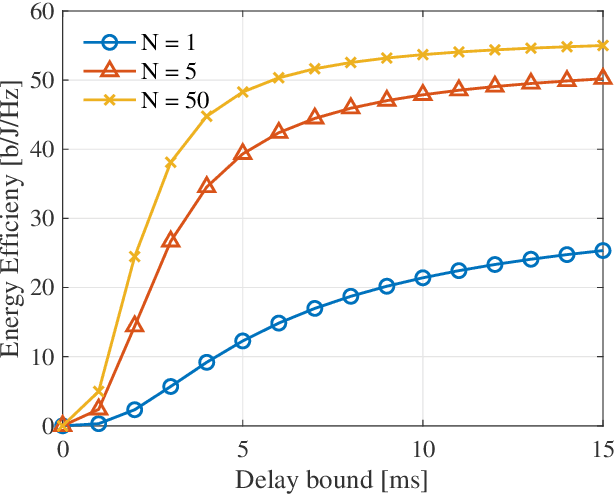
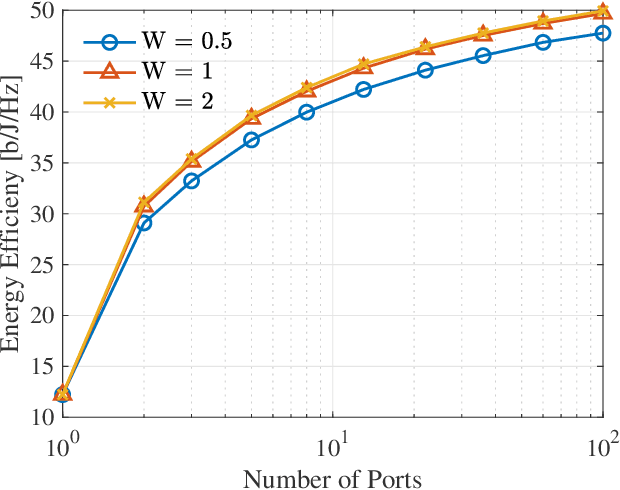
Abstract:The explosive growth of teletraffic, fueled by the convergence of cyber-physical systems and data-intensive applications, such as the Internet of Things (IoT), autonomous systems, and immersive communications, demands a multidisciplinary suite of innovative solutions across the physical and network layers. Fluid antenna systems (FAS) represent a transformative advancement in antenna design, offering enhanced spatial degrees of freedom through dynamic reconfigurability. By exploiting spatial flexibility, FAS can adapt to varying channel conditions and optimize wireless performance, making it a highly promising candidate for next-generation communication networks. This paper provides a comprehensive survey of the state of the art in FAS research. We begin by examining key application scenarios in which FAS offers significant advantages. We then present the fundamental principles of FAS, covering channel measurement and modeling, single-user configurations, and the multi-user fluid antenna multiple access (FAMA) framework. Following this, we delve into key network-layer techniques such as quality-of-service (QoS) provisioning, power allocation, and content placement strategies. We conclude by identifying prevailing challenges and outlining future research directions to support the continued development of FAS in next-generation wireless networks.
Fluid Antenna System-Assisted Self-Interference Cancellation for In-Band Full Duplex Communications
Jun 05, 2025Abstract:In-band full-duplex (IBFD) systems are expected to double the spectral efficiency compared to half-duplex systems, provided that loopback self-interference (SI) can be effectively suppressed. The inherent interference mitigation capabilities of the emerging fluid antenna system (FAS) technology make it a promising candidate for addressing the SI challenge in IBFD systems. This paper thus proposes a FAS-assisted self-interference cancellation (SIC) framework, which leverages a receiver-side FAS to dynamically select an interference-free port. Analytical results include a lower bound and an approximation of the residual SI (RSI) power, both derived for rich-scattering channels by considering the joint spatial correlation amongst the FAS ports. Simulations of RSI power and forward link rates validate the analysis, showing that the SIC performance improves with the number of FAS ports. Additionally, simulations under practical conditions, such as finite-scattering environments and wideband integrated access and backhaul (IAB) channels, reveal that the proposed approach offers superior SIC capability and significant forward rate gains over conventional IBFD SIC schemes.
Towards end-to-end spoken language understanding
Feb 23, 2018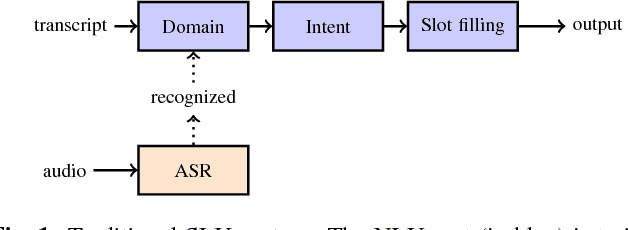
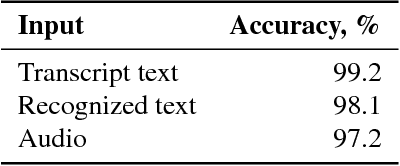
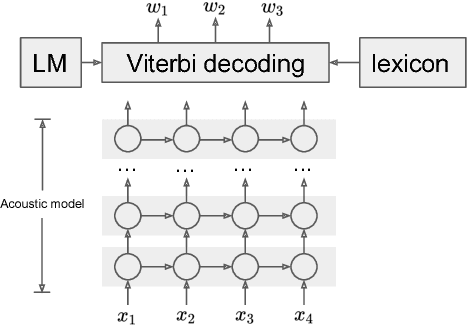
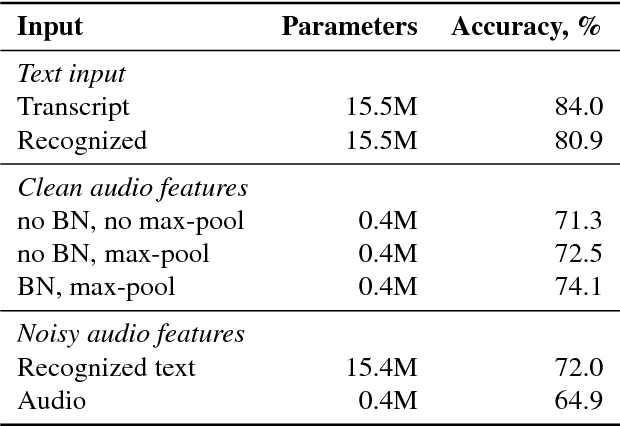
Abstract:Spoken language understanding system is traditionally designed as a pipeline of a number of components. First, the audio signal is processed by an automatic speech recognizer for transcription or n-best hypotheses. With the recognition results, a natural language understanding system classifies the text to structured data as domain, intent and slots for down-streaming consumers, such as dialog system, hands-free applications. These components are usually developed and optimized independently. In this paper, we present our study on an end-to-end learning system for spoken language understanding. With this unified approach, we can infer the semantic meaning directly from audio features without the intermediate text representation. This study showed that the trained model can achieve reasonable good result and demonstrated that the model can capture the semantic attention directly from the audio features.
 Add to Chrome
Add to Chrome Add to Firefox
Add to Firefox Add to Edge
Add to Edge